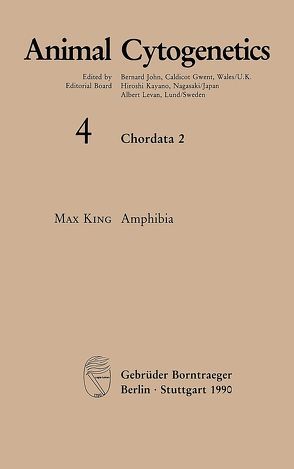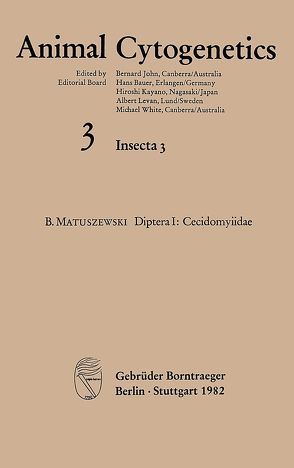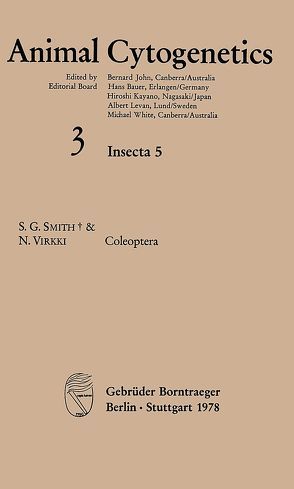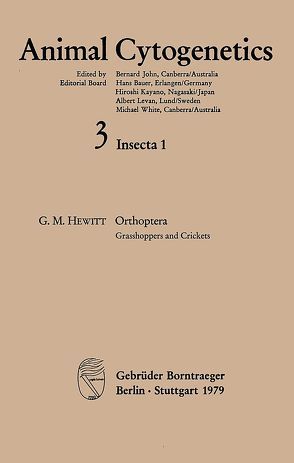
The phylum Annelida comprises the segmented worms and includes the familiar earthworms and leeches, plus a great number of marine and fresh-water species that are less well known. The most distinguishing characteristic of the phylum is the division of the body into similar segments along the antero-posterior axis. This segmentation is not restricted to the external appearance but is also reflected in the internal structures, including the reproductive organs, which are of special interest in the context of the present monograph. In the ancestral condition no well-defined gonads are present, but during the breeding season ova or spermatozoa arise from the wall of the coelum in each segment except near the anterior end. In the advanced condition the number of gonads is very much limited. Both male and female sexual organs occur in the same individual and they are permanent and often complicated structures in earthworms and leeches. The phylum is usually divided into three classes: Polychaeta, Oligochaeta and Hirudinea. The class Polychaeta contains the marine annelids and has been generally considered to display the more primitive features of the phylum. The class Oligochaeta, which includes the fresh-water naidids and tubificids and the terrestrial earthworms and enchytraids, may have evolved from some early polychaetes. The class Hirudinea, the leeches, probably arose from some stock of fresh-water oligochaetes.
Aktualisiert: 2022-02-28
> findR *

One of the major problems encountered when attempting to provide a comprehensive overview of amphibian cytogenetics is the choice of a suitable taxonomy. Substantial changes to the higher taxonomies continue to occur at a relatively rapid rate, although they have varying levels of acceptance. A comparison of Dowling & Duellman?s (1974) radical reappraisal of the Anura, when compared to the currently aecepted version edited by Frost (1985), shows considerable flexibility at the familial and sub-familial levels, and major discrepancies in taxonomic affiliations at all levels. Much of the variation in higher taxonomic nomenclature appears to have been strongly influenced by geographic criteria. For example, Savage (1973) argued that the Australian hylid frogs should be relegated to a separate famin called the Pelodryadidae, on largely geographic grounds. Although this step has not gained universal acceptance, Frost (1985) did give these animals subfamilial status. Similarly, Dowling & Duellman (1974) argued that the primitive North American frog Ascapbus truei should be given familial status and placed it in the monotypic famin Ascaphidae. However, Frost (1985) included Ascapbus with three endemic New Zealand species in the Leiopelmatidae, a decision which in the past has been most difficult to justify on geographic grounds. In other cases, such as the Arthroleptidae and Hemisiidae, specialized groups of animals have been elevated to familial status from subfamilial rank because they form a unique and morphologically distinctive assemblage. Such reclassifications have been made possible by the significant taxonomic input being made in these taxa. That is, the additional species which had been described provided systematists with a broad perspective on the range of variation within a higher taxa, and they can therefore more precisely define its limits. The magnitude of the taxonomic changes can be seen in the following two examples. Dowling & Duellman (1974) when discussing the largely African Hyperoliidae considered the then known group to be comprised of 14 genera with 63 species. Twelve years later Frost (1985) recognized 14 genera and 219 species. Similarly, the South American poison arrow frogs of the Dendrobatidae comprised three genera and 60 species (sensu Dowling & Duellman, 1974), whereas, Frost (1985) considered four genera and 116 species. In both examples, these substantial changes to the number of species are a product of the increased taxonomic effort in regions where such studies have in the past been neglected, namely Africa and South America.
Aktualisiert: 2022-05-06
> findR *

The Cecidomyiidae are a family of ?lower? Diptera (suborder Nematocera) ranked into the superfamily Bibionomorpha. Included in the same group are the Mycetophylidae, Sciaridae, Bibionidae, Ceroplatidae, Scatopsidae, Anisopodidae and Macroceridae, to mention only families with the largest number of species. Rodendorf (1946) considers that the Cecidomyiidae originated from a family of Dipterous flies in the early Cretaceous period. Mani (1950) is of the opinion that this probably took place in the Lower Jurassic, while Henning (1954) places it in Middle-Jurassic. Möhn (1960a) too holds that free living gall midges existed already in the Jura, but that gall-producing species first appeared in the Upper Cretaceous period. Thus, apart from some differences of detail, both authors agree that primitive gall midges appeared in the Jura, that the subfamily Cecidomyiinae appeared at the beginning of the Cretaceous period as the most progressive group, and that at the end of that period this subfamily already included a group of species developing in living plant tissues and producing galls. This opinion has been confirmed by results of paleontological studies of insects from the Baltic amber, which showed that the Cecidomyiidae were a diversified and highly specialized family in the forests of the Upper Eocene, and that this family had considerable similarities to the present-day gall midges.
Aktualisiert: 2015-10-07
> findR *

The general plan of this monograph, as well as the scientific and English editing of the manuscript, were mainly the task of S.G. Smith, until his death in May, 1975. Chapters 2 to 5 were written during the year beginning July lst. 1972, when Virkki spent his sabbatical leave from the University of Puerto Rico at the Insect Pathology Research Institute in Sault Ste. Marie. These Chapters include a relatively broad discussion of the Coleoptera in relation to recent advances in cytogenetics, allowing us some speculation and new hypotheses. The literature survey for these chapters was practically concluded by 1973, although a few additions were made later. Virkki is mainly responsible for this part of the volume. Six is the most deeply analytical of our Chapters, containing the first synopsis of the meticulous karyotyping, hybridisation, and cytotaxonomic studies on Chilocorini and Pissodes weevils conducted by Smith during the last twenty years. Chapters 6 and 7 were mainly written by him in 1973-75. Smith?s third Chromosome List is added to the end of the volume as an Appendix.
Aktualisiert: 2022-02-09
> findR *

There are four principal reasons why the study of reptilian karyology is of importance. First, reptiles occupy a key position in the evolution of vertebrates. They were the first to break free of the aquatic environment (Carroll, 1969), and are themselves the direct descendants of the stock from which all extant amniotes derive. Second, the evolutionary history of this class is better known than that of most other animal groups because of a relatively good supply of fossil forms. Third, extant reptiles, while not exhibiting the range of mesozoic forms, nevertheless show wide morphological and ecological differences, including forms adapted to diversified environments. Finally, a large amount of data have been collected on the biogeography, ecology, reproductive biology, and, in some cases, also on the cytological variability at both inter- and intraspecific level of certain of the reptilian groups. These four factors make this class a good model for the study of the role of genomic variations in macro- and microevolutionary processes and the cytological and molecular mechanisms which underlie these variations.
Aktualisiert: 2015-10-07
> findR *

The contribution of Orthopteran material to our general understanding of the chromosome and cytogenetics has always been significant. From just after the rediscovery of Mendel?s work in the early part of the 20th Century, the large size of the chromosomes and low numbers in the complements of most species have caused investigators to turn again and again to this group as their experimental material. In 1951 White reviewed the important areas where the Orthoptera had furnished evidence, from the pioneer work of McClung (1905) to the then present. Many of the same issues are still with us today albeit in a somewhat different guise, for a series of revolutions in biology in the last 25 years has greatly expanded our understanding of the chromosome, including that most fundamental series of discoveries that established DNA as the genetic material. Chromosome structure, replication, transcription, movement, pairing, chiasma formation and mutation are fields of great activity at present, and it was initially intended to include sections on these topics. But whilst the Orthoptera can contribute much to these debates, they are general phenomena which properly require a consideration of evidence from many groups of organisms besides the Orthoptera. Furthermore the Orthoptera do not appear to differ greatly from other groups in the general outline of these features Consequently only those aspects where Orthopteran material is particularly relevant will be mentioned and they will be dealt with in the context of chromosomal variation and evolution in the Orthoptera.
Aktualisiert: 2015-10-07
> findR *
MEHR ANZEIGEN
Bücher von Kayano, Hiroshi
Sie suchen ein Buch oder Publikation vonKayano, Hiroshi ? Bei Buch findr finden Sie alle Bücher Kayano, Hiroshi.
Entdecken Sie neue Bücher oder Klassiker für Sie selbst oder zum Verschenken. Buch findr hat zahlreiche Bücher
von Kayano, Hiroshi im Sortiment. Nehmen Sie sich Zeit zum Stöbern und finden Sie das passende Buch oder die
Publiketion für Ihr Lesevergnügen oder Ihr Interessensgebiet. Stöbern Sie durch unser Angebot und finden Sie aus
unserer großen Auswahl das Buch, das Ihnen zusagt. Bei Buch findr finden Sie Romane, Ratgeber, wissenschaftliche und
populärwissenschaftliche Bücher uvm. Bestellen Sie Ihr Buch zu Ihrem Thema einfach online und lassen Sie es sich
bequem nach Hause schicken. Wir wünschen Ihnen schöne und entspannte Lesemomente mit Ihrem Buch
von Kayano, Hiroshi .
Kayano, Hiroshi - Große Auswahl an Publikationen bei Buch findr
Bei uns finden Sie Bücher aller beliebter Autoren, Neuerscheinungen, Bestseller genauso wie alte Schätze. Bücher
von Kayano, Hiroshi die Ihre Fantasie anregen und Bücher, die Sie weiterbilden und Ihnen wissenschaftliche Fakten
vermitteln. Ganz nach Ihrem Geschmack ist das passende Buch für Sie dabei. Finden Sie eine große Auswahl Bücher
verschiedenster Genres, Verlage, Schlagworte Genre bei Buchfindr:
Unser Repertoire umfasst Bücher von
- Kayapinar, Haydar
- Kayapınar, Ismail
- Kayat, Rasha
- Kayatz, Josefa
- Kayatz, Kristina
- Kayayan, Eric
- Kayden, Alissa
- Kaye, Beverly
- Kaye, Carol
- Kaye, Erin
Sie haben viele Möglichkeiten bei Buch findr die passenden Bücher für Ihr Lesevergnügen zu entdecken. Nutzen Sie
unsere Suchfunktionen, um zu stöbern und für Sie interessante Bücher in den unterschiedlichen Genres und Kategorien
zu finden. Neben Büchern von Kayano, Hiroshi und Büchern aus verschiedenen Kategorien finden Sie schnell und
einfach auch eine Auflistung thematisch passender Publikationen. Probieren Sie es aus, legen Sie jetzt los! Ihrem
Lesevergnügen steht nichts im Wege. Nutzen Sie die Vorteile Ihre Bücher online zu kaufen und bekommen Sie die
bestellten Bücher schnell und bequem zugestellt. Nehmen Sie sich die Zeit, online die Bücher Ihrer Wahl anzulesen,
Buchempfehlungen und Rezensionen zu studieren, Informationen zu Autoren zu lesen. Viel Spaß beim Lesen wünscht Ihnen
das Team von Buchfindr.





